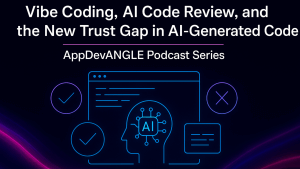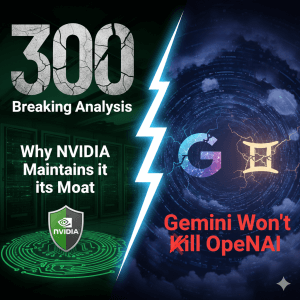Analysis: Oracle Puts the “Platform” Back in Database
Oracle’s latest announcements around Oracle AI Database 26ai and its surrounding innovations mark a significant pivot point, not just for Oracle, but for how enterprises will architect and operationalize AI-ready data.
Oracle is tackling bringing what others continue to segment the stack: data lakes, lakehouses, vector stores, JSON, graph, MCP, analytics, and transactional systems. Oracle is taking an aggressive stance: one data platform that unifies workloads, data types, and AI operations. This isn’t a new slogan; it’s the culmination of years of engineering investment in Oracle AI Database, Exadata, Autonomous Database, and distributed database architectures now extended to AI vectors, retrieval-augmented generation (RAG), and agentic workloads.
At a time when CIOs are struggling with data sprawl, regulatory fragmentation, and model governance, Oracle’s pitch is resonating: simplify, secure, and scale, all in one consistent substrate.
What stands out in Oracle AI Database 26ai is less the model integration itself and more the data-centric AI architecture it represents. Instead of sending data to external AI services, Oracle brings AI to the data, allowing vectors, LLMs, and agents to operate inside the database, with governance, lineage, and security intact. That aligns directly with financial services, telecom, and government customers’ needs: performance, sovereignty, and trust.
From a market perspective, this positions Oracle not merely as a database vendor but as one of the few players building a complete AI data platform, bridging OLTP, analytics, and generative AI with shared metadata, policy enforcement, and elasticity across clouds.
Vision: “All Data, All Workloads, One Platform”
Oracle EVP Juan Loaiza’s keynote reinforced this integrated vision. He emphasized Oracle’s goal to “solve the whole data problem,” not isolated workloads. With over 5,000 engineers dedicated to Oracle AI Database, the scope spans from AI to OLTP and analytics to distributed databases and lakehouses; all operating on the same foundation for consistency, disaster recovery, and security.
Loaiza described a “document-relational bridge,” which Oracle calls Relational JSON Duality Views, where JSON documents can be stored and queried natively alongside relational tables, allowing developers to interact with data in the format their applications expect. At the same time, Oracle handles optimization under the covers.
This simplification continues into AI:
- Vectors and similarity search are now core to the database, enabling millisecond-level retrieval over millions of objects.
- Retrieval-augmented generation (RAG) queries can execute directly via SQL, blending business data and semantic context without leaving the database.
- AI agents are being introduced for multi-step reasoning that securely plan, query, and act on enterprise data within governed contexts.
In essence, Oracle embeds the AI pipeline into the database rather than bolting it onto the data platform. This will work for those building their applications on the data they have in Oracle without data movement or potential exposure. There are other features for those using Oracle @ Cloud, such as Zero ETL, that will also make this attractive.
Engineering at Scale: Exadata, Elasticity, and Sovereignty
Oracle’s platform strength remains in its engineered systems. Exadata continues to dominate high-end performance tiers. Loaiza noted that 77 percent of the Fortune Global 100 use it, and new elasticity features in Oracle Exadata enable “Exadata-as-a-Service” to be down to just two CPUs. This scaling down also continued with the new Cloud @ Customer offering OCI Dedicated Region 25.
Equally important are distributed and sovereign database capabilities, allowing enterprises to keep data within specific geographies while maintaining a single logical database. This is critical for industries like banking and telecom facing mounting data-locality regulations.
Complementary innovations, such as active data cache, in-database firewalls, and Real-Time Recovery, extend the resilience and security posture required for AI-driven, compliance-sensitive workloads.
Oracle Autonomous AI Lakehouse: Unifying Data and Intelligence
Oracle also introduced its next-generation Autonomous AI Lakehouse, designed to unify data management, analytics, and AI into a single, flexible platform. At its core is a Unified Data Catalog that federates structured and unstructured data across Oracle systems, data platforms, and open-source ecosystems, including Apache Iceberg, across clouds, creating a single view of enterprise data assets.
The Lakehouse architecture supports open data formats and organizes information into bronze, silver, and gold layers, optimizing it for analytics, AI, and intelligent applications. Oracle is enhancing the developer experience through integrated AI-powered tools for code generation, sentiment analysis, and model creation, streamlining the path from raw data to production-grade insight.
Oracle added Apache Iceberg to provide an open, standardized table format that enables seamless data interoperability across different platforms and tools. By implementing Iceberg, Oracle allows customers to store data in their database while maintaining accessibility for other vendors, which breaks down traditional data silos.
Why Apache Iceberg Matters
Going deeper, Apache Iceberg is the table format, so data in object storage can be read and written by any engine, SQL, Python, or third-party platforms, without exports or bespoke converters. This extends Oracle’s long history with standards (SQL, Java, graph/JSON in SQL) and addresses a real-world constraint: data lives across on-prem, hybrid, and multi-cloud estates where sovereignty and regulatory limits often prevent wholesale migration. Not to mention cost. By adopting Iceberg as the interoperability layer, Oracle lets customers keep data where it must reside while avoiding vendor lock-in, enabling multi-engine analytics, shared catalogs/lineage, and consistent governance across platforms.
Spark, Compute Flexibility, and Open Engines
An essential extension of this open design is Oracle’s inclusion of Apache Spark and other open-source data engines as first-class citizens within the AI Lakehouse. Spark can now operate directly over Iceberg-managed data in object storage, allowing data engineers and scientists to perform transformations, data preparation, and machine learning model development without shifting data out of Oracle’s environment. This architecture separates computing from data, letting customers run Spark, which makes sense for large-scale distributed jobs, while relying on Oracle AI Database and Exadata for low-latency analytics, AI vector queries, and mission-critical workloads. It’s a pragmatic move that combines Oracle’s engineered efficiency with the extensibility of the modern open data stack. It is also a nod to Apache Spark’s, the underpinning of Databricks’ Data Lake technology, dominance in the data science arena and AI.
True to Oracle’s enterprise DNA, the platform embeds security, governance, and lineage into every layer, ensuring compliance and trust across data sources. Developers can now build and operationalize AI applications directly within the Autonomous AI Lakehouse, using a mix of large models and traditional ML techniques for use cases ranging from customer churn prediction and fraud detection to regulatory monitoring and business intelligence.
In short, Oracle’s AI Lakehouse, built on Oracle Database, aims to integrate data and AI development natively, accelerating how organizations transform raw data into insight while maintaining the control and transparency enterprises demand.
Trust, Privacy, and the AI Challenge
Oracle underscores that trust in AI outcomes will be the defining enterprise issue. Oracle’s approach is building trust into the data layer itself: enforcing row and attribute-level access rules, ensuring LLMs and agents only see data a user can view. This is very key, especially with the belt and suspenders approach that most companies will take.
As enterprises move from basic copilots to autonomous agents, Oracle’s embedding of AI and database governance may prove to be a significant differentiator. AI without trusted data is potentially dangerous; Oracle wants to make sure AI inside its ecosystem is grounded, explainable, and compliant by design.
Our ANGLE
On paper, it might not look like significant additions to the new database, but the hard work was done under the hood to make all of this AI native. Building ease of use is not easy. We see Oracle AI Database 26ai as more than a version number; it’s a statement of architecture. By converging transactional, analytical, and AI workloads on a single trusted foundation, Oracle is betting that the next era of enterprise intelligence won’t be just about more and bigger models; it’ll be about where the data lives, how it’s governed, and how AI operates on it.
It is also betting on making the toil of being a DBA significantly less across AI + Data for App Dev and utilizing Open Standards. We see Oracle breathing life into the DBA persona and expanding their careers as integral parts of the data engineering teams well into the future. This reinforces Oracle’s vision. Loaiza emphasized Oracle’s goal to “solve the whole data problem,” not isolated workloads. By converging transactional, analytical, and AI workloads on a single trusted foundation, Oracle is betting that the next era of enterprise intelligence won’t be about more models; it’ll be about where the data lives, how it’s governed, and how AI operates on it.
However, the real story is Oracle’s embrace of open formats like Apache Iceberg. This strategic move signals Oracle’s recognition that no enterprise lives in a single-vendor world. Iceberg allows customers to control their data destiny, keeping it in an open, queryable format accessible by multiple engines, such as Databricks, Snowflake, Spark, AWS, and others. That transparency and interoperability protect customers from the “Hotel California” effect of cloud data platforms, easy to check in, impossible to leave. And not every agent, AI, or application will be built on the Oracle Autonomous AI Lakehouse. Some will use on-premises or hyperscaler stacks, in addition to the data in Oracle AI Database.
For Oracle customers, Iceberg is not just about openness; it’s about confidence. Confidence that the data they store in Oracle can still participate in an open ecosystem, feeding diverse AI models, analytics pipelines, and partner integrations without friction or risk. This is a significant relief for CIOs balancing lock-in anxiety with innovation velocity. It should also be noted that Oracle contributes to the standards, particularly SQL.
At the same time, Oracle is quietly redefining what its Autonomous database means in the AI era, less about automation of DBA tasks and more about autonomous intelligence: self-managing, self-optimizing, and self-securing data systems that can reason about their own state. We see it as a progression, with Oracle AI Database 26ai as the starting point and Autonomous AI Lakehouse as the potential goal for organizations (Breaking Analysis coming soon on this).
In short, we see that Oracle AI Database 26ai + Autonomous AI Lakehouse unifies open standards and enterprise-grade intelligence, bridging the best of Oracle’s engineered reliability with the freedom of open data. It’s a smart evolution for customers who want the features/functions of Oracle and the openness of the modern data stack.



